
© Dean Alexander, courtesy The Washington Ballet. (Click image for larger version)
www.washingtonballet.org
Washington Ballet season/subscription page
Interview with Septime Webre, artistic director of the Washington Ballet
It’s no small task to run a chamber-size ballet company in Washington, D.C., where each year the Kennedy Center for the Performing Arts presents a host of internationally-renowned classical ballet troupes. The competition for audience attention is tough and savvy ballet-goers are hard to impress. Yet for the past 15 years, artistic director of the Washington Ballet, Septime Webre, with his perpetual love and passion for ballet, his boundless creativity and openness to risk-taking, has been doing just that – impressing and surprising the audiences as his company puts on one show-stopping program after another.
The Washington Ballet’s new 2014–2015 season is the season of anniversaries: the 70th anniversary of Mary Day, founder of the Washington Ballet, opening the renowned Washington School of Ballet, the 15th anniversary of Septime Webre taking the helm of the company as its artistic director and the 10th anniversary of Webre’s production of The Nutcracker – a beloved staple of the Christmas celebration in the nation’s capital.
To commemorate the occasion, the new season has a special theme, Taking Flight, and offers an ambitious and stylistically-diverse repertory. It includes a world premiere of Sleepy Hollow, the third instalment of Webre’s trilogy of ballets based on American literary classics, the company’s very first production of Swan Lake, the return of Webre’s hugely popular Alice (in Wonderland), a mixed program of contemporary ballets created by the European choreographers and George Balanchine’s Serenade.

In our recent conversation, we talked with Septime Webre about the company and its new season, and about his life in dance and his tenure as artistic director of the Washington Ballet.
When did you first realize that ballet was your true calling?
My mother was from Cuba, and there is a Cuban saying that Cubans dance before they can walk. This was true for me. I was growing up in the Bahamas in a family that danced. My family had salsa parties from the time I was four years old. When I was 13, I followed my sister to a ballet school and was formally introduced to ballet. I knew right away that ballet was very special for me. We lived in the Bahamas until I was 12, then in a small town in South Texas until I was 17. At that time I didn’t envision myself in the professional dance world. Only in my late teens did I allow myself to imagine that I could have a life in ballet.
Tell me about your first steps as a choreographer.
There are two different stories there. When I was about 10 years old, before I had any formal ballet training at all, I wrote plays and staged musicals for my family, starring my brothers and sisters. I had a directorial role and choreographed for my siblings. This was my early unformed experience in choreography.
My first ballet, D-Construction, premiered 25 years ago. It was a ballet set to a driving percussion score, “Third Construction,” from 1936, by the great American avant-garde composer John Cage. I made it a very physical dance for four men. At that time, I was interested in experimental ideas in classical ballet and favored a very athletic style of movement.
Which choreographers inspired you?
My first ballet teacher was a former principal with the Royal Ballet, so I received a formal and relatively conservative training. When I was a teenager, I remember going to a video library and watching a videocassette with George Balanchine’s Four Temperaments probably 100 times. His manipulation of the classical form pushed the boundaries of classical ballet; yet, in this absolutely modern ballet, Balanchine showed his thorough respect for the classical tradition. This was my very first inspiration.
Then I discovered the 19th-century classics, particularly works of Marius Petipa. It helped me to understand and appreciate even more what Balanchine was doing. I was also moved by works of Merce Cunningham, Twyla Tharp, William Forsythe, and Jiří Kylián.
In 1999, what were your first impressions about the Washington Ballet, and what did you want to change about the company right away?
I knew Mary Day’s reputation very well. She had established an amazing and very strong institution. I knew that in the works of Choo San Goh the company had developed a very unique point of view. This was a company of beautifully-trained classical dancers, doing a lot of new works created especially for these dancers. Choo San’s work really put the company on the world map. I wanted to preserve this central quality of the Washington Ballet: a strong classical training, plus the creation of new ballets for the dancers. That has remained a very important part of who we are as a company.
But I also wanted to expand the profile of the Washington Ballet. Over the years, we have become a much bigger organization. When I first came in Washington, the company’s annual budget was $2.8 million; now it is $11 million. I also wanted to bring new choreographers to the Washington Ballet, and to include the 19th-century classical works in the company’s repertory. So we produced La Sylphide, Don Quixote, Le Corsaire, Giselle and this season the company is dancing its very first Swan Lake.

© Brianne Bland. (Click image for larger version)
I also wanted to develop new full-length story ballets for the company. I started with The Great Gatsby and Hemingway: The Sun Also Rises. This season we will premier Sleepy Hollow, a new ballet based on Washington Irving’s “The Legend of Sleepy Hollow.”
Finally, I wanted to increase the international profile of the company by hiring a very diverse group of dancers from all around the world.
Tell me about the Washington Ballet’s community engagement.
I put a lot of energy into the local community. I knew that the Washington Ballet would be more successful if we integrated our work into the social and cultural fabric of the city. During my very first year, I founded the DanceDC program, which is a partnership with the District of Columbia public school system. More than 10,000 kids have participated in this program, which uses an integrated arts curriculum based on the pre-ballet syllabus of the Washington School of Ballet. In 2005, we opened The Washington Ballet @THEARC – a branch of the Washington School of Ballet in Southeast Washington, D.C., where 95 percent of the students are African American. It’s been great to see ballet flourish in this area of the city.
Over the past 15 years the company has evolved. What are the most important achievements?
The achievements have been spread across several fronts. Let me summarize the most important.
The first was the inclusion of 19th-century works in the company’s repertory. Washington audiences are well familiar with these works – the Kennedy Center presents these ballets in performances by some of the biggest ballet companies in the world.
I program the classics not only because the audiences need to see them, but because our artists need to dance them. When we dance classical ballets, we bring our unique qualities to these works. Our artists need to be able to tackle the classical repertory in order to grow and become more well-rounded dancers. Before I arrived, the Washington Ballet didn’t have any 19th-century works in its repertory except The Nutcracker and La Fille Mal Gardée, so it was important for me to stretch the technique of the company.

© Dean Alexander, courtesy The Washington Ballet. (Click image for larger version)
It was also important to include in the company’s repertory the works of the world’s great choreographers such as William Forsythe, Twyla Tharp, Mark Morris, Christopher Wheeldon, and Jiří Kylián.
And, finally, we continue to be committed to new works made specifically for the Washington Ballet. I have created a number of full-length ballets based on literary themes. We continue to invite the contemporary choreographers such as Trey McIntyre, Edwaard Liang and Annabelle Lopez Ochoa to create original works for our dancers.
The combination of all these initiatives has brought the technique and the artistry of the Washington Ballet to a very high level.
Your dancers have to be versatile in a wide range of styles. How do you achieve this?
It starts with a great pure classical technique. All the dancers who join the Washington Ballet have a strong classical training. We emphasize the importance of the full company class in order to refine the dancers’ technique. That’s the basis of all of it. Classical technique is a very pliable, fluid language – a really good classically-trained dancer can dance anything.
Second, the dancers become more versatile if more is expected of them. I think the answer is in the programming itself. It’s important for the dancers to be challenged on a daily basis and to be exposed to all different styles during a season.
What guides you when you select the company’s repertory for each season?
The whole season should offer a comprehensive artistic statement about the company. There should be a logical journey that guides the audience and includes the exploration of classical ballet as well as forays into new territory. We want to communicate with the audience. So the audience is first and foremost.
It is also really important to have the repertory that fits our dancers. For example, this year we are dancing Swan Lake. We would never have considered doing this work if we hadn’t in the past tackled ballets like Coppélia, Don Quixote and Le Corsaire. Last fall we performed Giselle, and the corps de ballet had advanced so strongly and looked so good that I said, “All right, let’s try Swan Lake.” One season builds on the next and you count on the dancers growing through the repertory.
The last but not least important consideration is that as artistic director you also have to be a pragmatic business person. The program for the season must spark imagination and captivate the audience in some way so they buy tickets and come to the theater.
Last season the Mariinsky Ballet brought its spectacular Swan Lake to the Kennedy Center. It’s a hard act to follow.
Swan Lake was choreographed for the Mariinsky Ballet. I went to see their opening night performance last year. It was a symphony of beautiful legs!

© Dean Alexander. (Click image for larger version)
The Washington Ballet, however, is a different kind of company. It’s a company of individuals with a kind of youthful American energy. While Kirk Peterson is staging a very classical Swan Lake for our company, I think the Washington Ballet will approach Swan Lake in its own unique way. We will not attempt to emulate the Mariinsky dancers. We have a different training and a different approach to stagecraft, but the company is ready for the task. We will bring the Washington Ballet’s unique personality and try to illuminate new aspects of this masterwork.
Let’s talk about your ballets based on literary themes. What inspires you in a literary work? What motivates you to create a ballet based on a book?
I have always been a reader. I love literature and I am inspired by the books I read. I love their dramas and their captivating stories which allow readers to imagine a whole world they otherwise may not know.
The project to create ballets based on literary works occurred to me at a certain point of my development as an artist. I started as a contemporary ballet choreographer, doing short abstract ballets like D-Construction. Over time, as artistic director first in New Jersey [at the American Repertory Ballet] and then here in Washington D.C., I realized that I needed to tackle story ballets to help pay the rent – the companies needed a box office hit. I began by working on ballets which already came with librettos and scores, like Romeo and Juliet, Cinderella, The Nutcracker and Peter Pan.
Five years ago I felt ready to tackle works which existed only in a book form. Having done these other ballets, I was ready to start creating from scratch.
I also felt that the American story hasn’t essentially been explored in classical ballet; whereas the European story has been so wonderfully told through the fairy tales and classics of the 19th-century canon. I wanted to start a kind of American series: thus The Great Gatsby, Hemingway and now Sleepy Hollow. In these books, the stories and characters are so compelling that it was only natural for me to want to develop ballets based on their narratives.
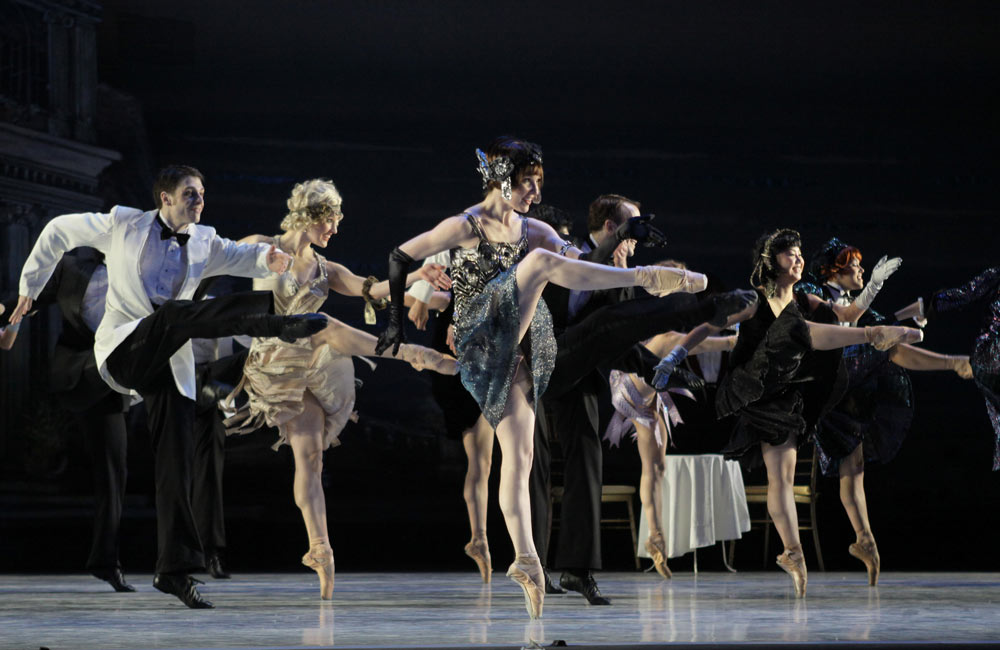
© Carol Pratt. (Click image for larger version)
What were the most memorable aspects of working on The Great Gatsby?
I would mention three of them. The first was my late night conversations with the composer [Billy Novick], who lived in Boston. Every night he would e-mail me an MP3 file of his new song. I would listen to it and at midnight I would have a phone call with him, telling him what I liked and what I wanted to be changed. He would write the music through the night. I would wake up the next morning and the new song would arrive. I would go in the studio with that song and create with the dancers. It’s a really exciting time of creation: collaborating on the music and choreographing to it right away.
F. Scott Fitzgerald’s The Great Gatsby is the great American novel. The story itself is remarkable. Working on its great themes and developing these extraordinary characters with the dancers was the second highlight.
Finally, it was a real pleasure working with musical artist E. Faye Butler, who, in my opinion, is the greatest blues singer in America.
How important is music in your creative process?
Music is everything. Music fuels the steps. In the past I experimented with creating in silence. I would make the steps and then set them to the music. Ultimately this process proved not to be successful for me. I have to have music around me all the time. Maybe it’s this Cuban soul in me that loves music and loves bodies moving to music.
What music are you listening to these days?
Actually right now I am only listening to the new score for Sleepy Hollow. Matthew Pierce has already written the music for the first half of Act I and we are working together trying to complete the entire score in the next few months. He sends me a new piece of music every day.
In general, I really love the music of J.S. Bach and baroque music. I love Cuban vocalists. I love jazz music. I have a very eclectic taste.
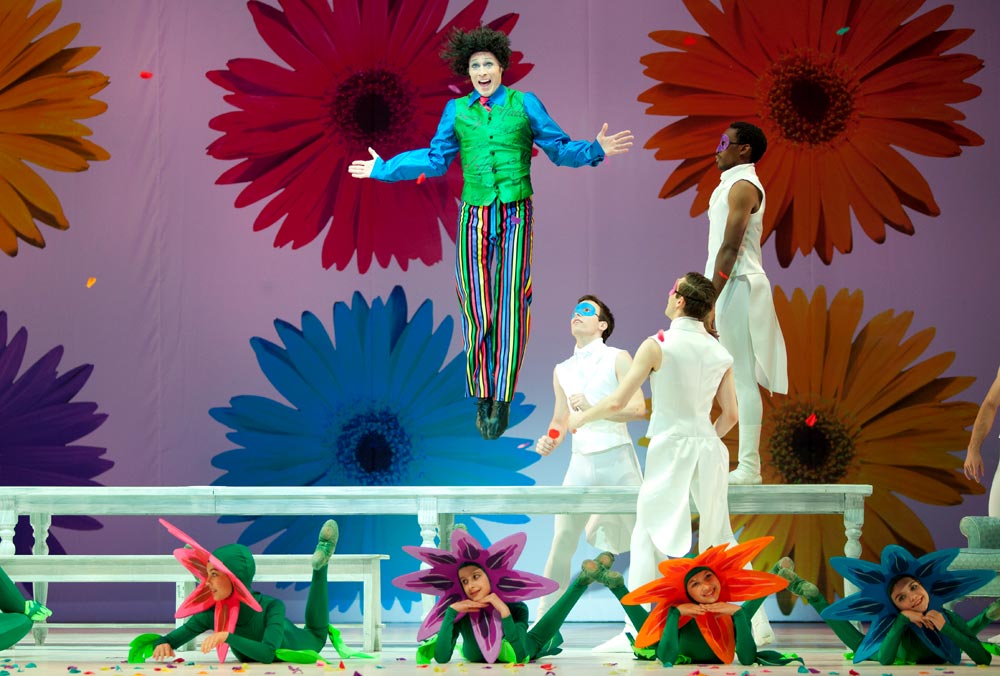
© Brianne Bland. (Click image for larger version)
Tell me about the creation of Alice. The ballet was a huge hit with the audience and you are bringing it back this season.
Alice was a wild ride! I had a several collaborators of note. Matthew Pierce’s music was picture-perfect. He approached the music from a character’s perspective. He wrote the score for a small chamber group, so the orchestration was quite refined; but at the same time his music had a lot of wit and humor and perfectly conveyed the outlandish characters of the story. Working with costume designer Liz Vandal, who also captured the characters so well, was another successful collaboration.
We all approached this project with a great deal of spirited play and fun, and that was a huge part of the success. So I am very delighted that both Matthew and Liz are working with us on the production of Sleepy Hollow.
How do you choose your collaborators?
It’s kind of like how you choose your friends. You meet a lot of people and there is this “it” factor with people who become your friends. You connect on an aesthetic level and on a personal level.
I have been working with Liz for nearly 15 years and I know her very well. We are very close friends, so we understand each other and we push each other to do our best.
Matthew was recommended to me when I was looking for a composer to work on the project The Lion, The Witch and The Wardrobe at Imagination Stage. We had a very good connection. I love music for strings and he writes beautifully for strings. He’s a classical artist with a contemporary point of view.
Let’s talk about Sleepy Hollow. What is the time line for the new production?
Sleepy Hollow presents a very special challenge that the other projects didn’t have. Washington Irving’s “The Legend of Sleepy Hollow” is a very intense short story. It’s about 20 pages long. So the first biggest challenge was to expand this short tale into a longer epic tale. I worked with two collaborators [William Lilley and Karen Zacarias] who helped me with the libretto. We read a lot of sources and developed two back stories – a prologue and a prologue to the first prologue. We finished the libretto three months ago. In June, Matthew and I started working on the music, costume designer Liz Vandal on the costumes for the ballet and set designer Hugh Landwehr on the production’s sets. The music, costumes, and sets should be completed by November. The last thing will be creating the steps with the dancers. We will start after Christmas and work for about 5 weeks until the premier.
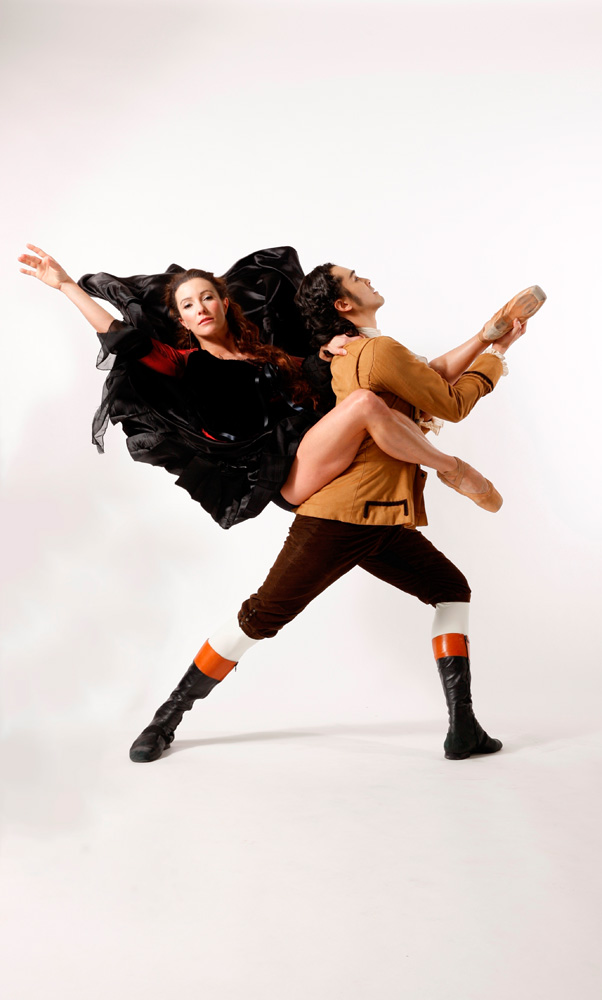
© Dean Alexander. (Click image for larger version)
Do the dancers participate in the creative process? To what degree is the final product a collaborative effort?
It’s completely collaborative. The dancers have a lot of input on the steps we create. First, I talk with them about the goals and about what the characters look like. In the creation of the principal roles, we really make the steps together, so the movements perfectly fit the dancers who are doing them. For the corps de ballet, I usually choreograph in a small studio with one or two dancers with whom I have worked for a long time and who know my style. We develop the material together and then teach it to the whole group.
I used to plan every step. For example, for The Nutcracker, which I choreographed 10 years ago, I created almost every step myself in my dining room the night before the rehearsal. Now I feel more comfortable working with my dancers. I go in the studio with a little less planning. I give the dancers a little less information and I include them into the creative process. It has been very rewarding for me and I think for them, too.
Some of the dancers have been with you for more than a decade. Does it feel like a family?
Absolutely! It’s a family that loves each other, occasionally argues, but always comes back together. The dancers take care of and support each other. We know each other very well and we’ve had a lot of rewarding years together.
How do you select new dancers for the company? What qualities you are looking for in a dancer?
We have dancers from all over the world. The two newest members of the company are from Cuba. First of all, I am looking for dancers with great technique and a beautiful line; but I also like dancers who are quite extreme – lyrically or athletically. I like dancers who consistently push themselves out of their comfort zones. I find that really exciting.

© Dean Alexander, courtesy The Washington Ballet. (Click image for larger version)
What were the most significant challenges you faced as artistic director?
In 2005, we had a labor dispute. We worked through it and I think the company is much healthier because of it. There have also been financial challenges here and there, since the economy has gone up and down over time. It has also been a challenge to manage our growth, as the organization has grown so much during these years. But by and large, it has been a pleasure.
What are the biggest rewards of being artistic director of the Washington Ballet?
It has been truly rewarding to see the artists grow. The company’s dancers perform on such a high level. I was so proud of them last season, all year long; and I know this is going to be another amazing year. It’s just seeing them dancing on such a high level – it makes me proud!
There has also been the growth of our school. When I first got here, the Washington School of Ballet had around 340 students, now we have over 1,100. It’s been most rewarding to see the expansion of the community programs and the effect that ballet has had on the kids’ lives.
What are your plans for the company for the immediate future and the long term?
I want the Washington Ballet’s 2014–15 season to be our best ever. We have a great repertory and a great environment to work in. I just want the company to continue to grow in all these wonderful ways.
What would you like to wish yourself and the company in this anniversary season?
I’d say I would like to wish us good luck, but that would not be appropriate in the ballet world. [Laughs.] So I want to wish us “Merde!” for the season – which means good luck!









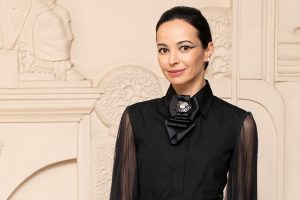

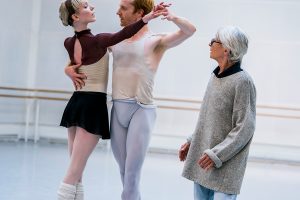
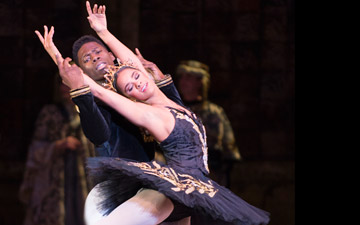
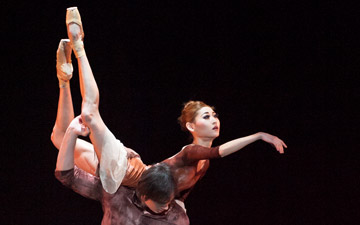
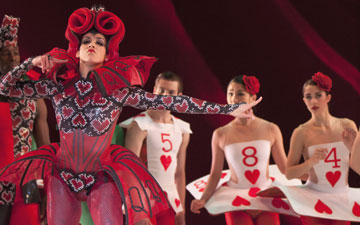
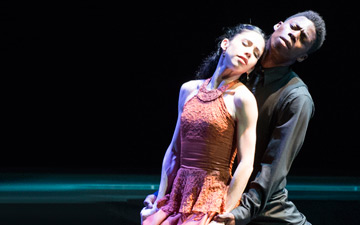

You must be logged in to post a comment.